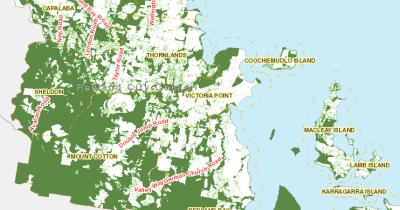How the Queensland Planning Act affects different types of developments

In last week's blog we touched upon subdivisions, advertising devices, and an overview of the general town planning space. This week we wanted to expand upon this by providing more insight into the current Queensland Planning Act (2016) and some of its intricacies.
Essentially a planning approval is not required for any development unless a "planning instrument" requires it. A planning instrument can be a local planning scheme, a state regulation (usually the Planning Regulation) or another act such as the Building Act.
Development is defined in the Planning Act 2106 as:
development means—
(a) carrying out—
- building work; or
- plumbing or drainage work; or
- operational work; or
(b) reconfiguring a lot; or
(c) making a material change of use of premises.
Reconfiguring is a broad umbrella term that means:
reconfiguring a lot means—
(a) creating lots by subdividing another lot; or
(b) amalgamating 2 or more lots; or
(c) rearranging the boundaries of a lot by registering a plan of subdivision under the Land Act or Land Title Act; or
(d) dividing land into parts by agreement rendering different parts of a lot immediately available for separate disposition or separate occupation, other than by an agreement that is—
- a lease for a term, including renewal options, not exceeding 10 years; or
- an agreement for the exclusive use of part of the common property for a community titles scheme under the Body Corporate and Community Management Act 1997; or
(e) creating an easement giving access to a lot from a constructed road.
The subdivision of land is probably the most common form of reconfiguring a lot. There are various kinds of subdivision including land as well as buildings (apartments or units).
A material change in the use of land means:
material change of use, of premises, means any of the following that a regulation made under section 284 (2)(a) does not prescribe to be minor change of use—
(a) the start of a new use of the premises;
(b) the re-establishment on the premises of a use that has been abandoned;
(c) a material increase in the intensity or scale of the use of the premises.
An example of a material change of use could be the building of a new house on a vacant lot, or even extending the existing house. So many of us are developers! You might not think of yourself in those terms but under the law when you build a new house it is "development"!
Not all development requires a planning approval (or building approval) and below are some examples:
- a garden shed if it is under a certain size doesn’t need a planning approval,
- a fence if is it under a certain height (1.8m including any retaining wall if part of the fence), or
- a retaining wall that is under 1m in height.
An extension to a house might not require a planning approval from council but it would require a building approval.
So if you’re thinking about doing a subdivision or an extension to your house call us here at East Coast Surveys and our planners assist you with your planning approval.







